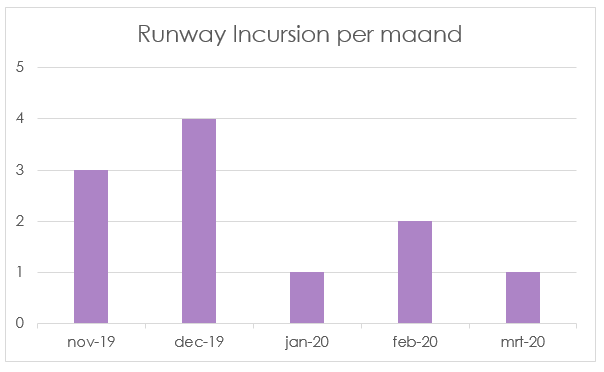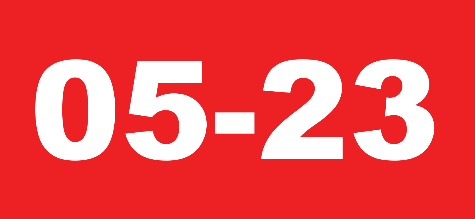Air traffic control has been provided at Lelystad Airport since 7 November 2019. Since then, all aircraft, vehicles and persons must have explicit permission from the Tower before entering the runway, taking off and/or landing.
If this happens without ATC’s permission, it is a runway incursion. In ICAO’s definition, this is:
“Any occurrence at an aerodrome involving the incorrect presence of an aircraft, vehicle or person on the protected area of a surface designated for the landing and take-off of aircraft.”
Runway incursions are considered one of the key safety risks in international civil aviation, which require continuous attention. In addition, runway incursions are always considered a serious incident and all incursions are recorded and reported to ILT.
The number of runway incursions is relatively high at Lelystad Airport compared to other fields. These mainly involve incidents of entering the runway without permission and/or taking off without take-off clearance. Presumably, this can partly be explained by the relative unfamiliarity with this type of occurrence and its safety risks and by incomplete familiarity with the new (flight) procedures at Lelystad Airport. This is why this newsletter contains some additional information on this.

FIGURE – MONTHLY RUNWAY INCURSIONS
At Lelystad Airport, the ’90-metre area’ is considered a protected area. This area around the runway can be recognised on intersections S1 to S7 primarily by the yellow ‘runway holding position markings’ (RHP markings) combined with the red ‘mandatory instruction signs’. In R/T, these positions are called ‘holding points’.

FIGURE – RUNWAY HOLDING POSITION MARKING

To draw extra attention to you approaching the 90-metre are, the last section of the yellow taxiway centre line in front of the RHP is additionally marked with interrupted yellow stripes on either side of the continuous centre line. In addition, runway guard lights have been installed on both sides of the taxiway at the level of the runway holding positions. These orange lights flash alternately.

FIGURE- ENHANCED TAXIWAY CENTRELINE MARKING

FIGURE- RUNWAY GUARD LIGHTS
Around the runway holding positions, the following applies:
1. Entry into the 90-metre area requires the permission of the Tower at all times and on each occasion. You receive this permission either directly in the form of a clearance to take off (“cleared for take-off”) or by means of an instruction to taxi onto the runway and wait there (“line up and wait runway 05/23”).
2. Without clearance or instruction, no part of your device may exceed the yellow RHP markings. Even if your wheels are still in front of the continuous lines, but the nose of your aircraft is already protruding beyond them, this is a runway incursion.
3. The instruction to line up the runway does not automatically mean that you may also start. This is only allowed after you have received formal clearance to take off.
4. Landing and/or touch-and-go is also allowed only if you have received proper clearance for this. Without this permission, you need to initiate your own go-around in a timely manner.
5. If you are in doubt as to whether you have received the correct clearance, ask for confirmation from the Tower before entering the runway, taking off or landing.
6. After landing, exit the runway as soon as possible. Only once you have completely crossed the solid double yellow line are you clear of the 90-metre area and the Tower may clear the next aircraft to take off or land. Note that you will need a taxi clearance afterwards to continue piloting the plane.
Examples of the R/T during alignment, take-off and landing can be found in the ‘Zakboekje RT Lelystad’ on the LVNL website: www.lvnl.nl/lelystad.

